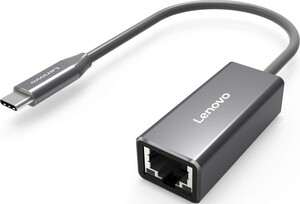How an Ethernet Switch Can Give You the Edge in Online Competition
Body
You most probably know that online competition has intensified beyond all bounds. Bandwidth and the speed of network translation are as important to consumers as streaming games and videos. And yet, a rarely noticed yet exceptionally effective networking device that can help you power up your social network is an Ethernet switch.
The Ethernet switches function in a manner that interprets the destination MAC address of each data packet and forwards it to only the port where it is connected. This enables superior speeds over a hub by ensuring that such incidents never occur.
In this post, I’ll demonstrate how an Ethernet network switch can be upgraded to boost performance online with the capacity of getting an upper hand.
Switches are Faster than Hubs
If you're still using an old Ethernet hub, it's time for an upgrade. Hubs broadcast all incoming data to every single port, whether the data is intended for that device or not. This causes packet collisions that slow down transmission speeds. Switches, on the other hand, only send data to the specific port of the intended recipient.
This eliminates collisions and allows for faster transmission speeds of up to 1 gigabit per second or higher, depending on the switch model. Faster speeds mean quicker loading times, smoother video calls, and lag-free gameplay, giving you a performance boost over competitors still using hubs.
Increased Network Capacity and Scalability
Ethernet allows you to connect more devices to your network. Most consumer-grade switches have between 4 and 8 ports, while enterprise switches can have 48 ports or higher. This scalability is important as your networking needs grow. You'll be able to easily add more computers, edge servers, wireless access points, IP phones, smart home devices, and anything else without maxing out your connection capacity.
Upgrading to a switch ensures your network infrastructure can scale with your business or personal use, keeping you ahead of competitors as your needs expand.
Prioritization of Important Network Traffic
Advanced switches allow you to prioritize important network traffic like video calls, file transfers, or online gaming. Using features like quality of service (QoS), you can designate some devices, applications or traffic types as high priorities to get preferential treatment. For example, you can tag VoIP phone calls and video conferencing as critical traffic to prevent lag or dropped calls.
This helps optimize your network performance for tasks that need low latency, like streaming or multiplayer games. Competitors still using basic switches may experience hiccups while you have a buttery-smooth connection.
Future-Proof Your Network
A high-quality Ethernet switch is a long-term investment that grows with your needs for years to come. As network speeds and technologies advance, a switch allows frictionless upgrades like migrating to 10G or faster connectivity. New ports, features and management capabilities can also be added via simple firmware updates.
This future-proofs your network infrastructure compared to basic switches or routers that become obsolete more quickly. Staying ahead of technological changes with an upgradable switch equips you for online success well into the future.
Remote Management Capabilities
Many business-grade Ethernet switches allow remote management through a web interface, command line, or network management software.
- This enables you to monitor traffic, configure ports, apply policies, upgrade firmware, and get alerts—all from anywhere via a browser or app. There is no need to be on-site to make changes.
- Remote management streamlines network oversight, so you can spend less time troubleshooting and more time focusing on your main priorities. Competitors wrestling with basic switches that lack these capabilities will be at a disadvantage.
Lower Latency for Online Gaming
If you're serious about competitive online gaming, a switch is a must-have. Reduced latency from faster switching compared to hubs means less lag, fewer dropped frames, and smoother gameplay. Advanced switches even allow you to prioritize gaming traffic for ultra-low latency. Whether you're streaming yourself or just playing at a high level, every millisecond counts against worthy opponents. A high-performance switch tilts the latency battle in your favor versus competitors still using slower networking gear.
Better Support for IP Cameras
If you run a business with security cameras, a switch makes it far easier to connect and manage IP cameras across your facility. Enterprise-grade switches provide enough ports to wire up dozens of cameras without running out. Their ability to segment the camera feeds using VLANs also improves security.
Plus, features like PoE (power over Ethernet) allow cameras to receive power and data over the same cable, simplifying installations. All these advantages give you a leg up in monitoring your property compared to competitors stuck with limited, unmanaged switches.
Optimized WiFi Performance
By connecting your wireless access points to the switch instead of a router, you gain more flexibility in positioning APs for optimal WiFi coverage. The switch easily supports multiple SSIDs, allowing you to create isolated guest networks or customize wireless access for IoT devices. Advanced Ethernet switches even offer mesh networking capabilities. All this directly boosts your WiFi performance, capacity, and security over competitors who are still using a single router for both wired and wireless connectivity.
Cost Savings Over Time
While an enterprise-grade switch requires more up-front investment than a basic home router, it saves money in the long run. Factors like power over Ethernet, remote management, longer product life cycles, and robust warranties lower your total cost of ownership. Less downtime and fewer support costs are also savings.
For businesses, a switch pays for itself via increased productivity and network uptime. Its scalability means there is no need to frequently upgrade either. Overall, the TCO is lower than piecing together an ad-hoc network solution over the years, giving you budgetary advantages versus competitors.
Resilience and High Availability
Many enterprise Ethernet switches offer redundancy features like failover, link aggregation, and load balancing for continuous uptime. If one switch or connection fails, traffic automatically fails over to the backup without interrupting services. Advanced switches also support clustering for distributed high availability across multiple devices. All these layers of redundancy ensure critical applications and services stay online even during outages, maintaining your competitive edge when others suffer disruptions. Resilience is the key to uninterrupted online success.
Final Words
Faster speeds, increased capacity, robust security, remote management, optimized wireless, and built-in redundancy all boost your performance, productivity, and uptime. Upgrading your network infrastructure with a quality switch streamlines operations while tilting latency, scalability, and cost battles in your favor long-term. Make the switch—it's a strategic investment that empowers you to compete and succeed online for years to come.







Comments